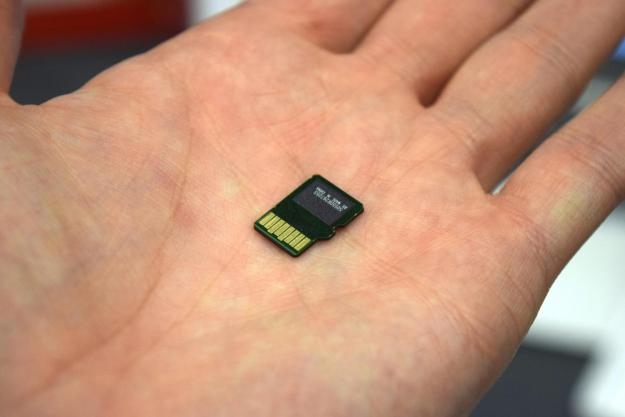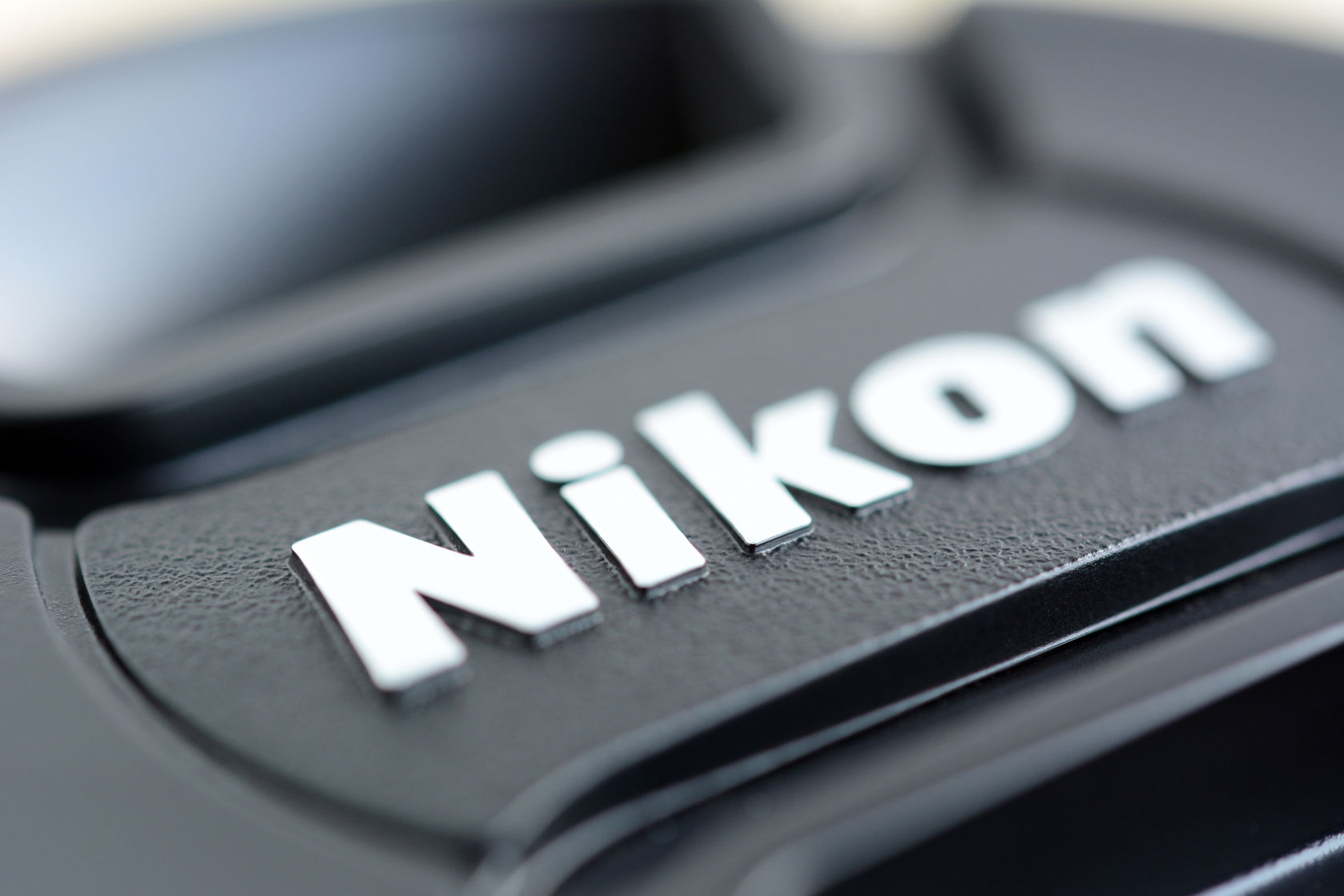
Between DSLRs and mirrorless cameras, budget compacts and impressive superzooms, Nikon has dozens of different options on the market, but the powerful D850 DSLR remains our pick for the best Nikon camera thanks to its blend of image quality and performance.
The D850 is a decidedly high-end camera and likewise isn’t right for everyone, but as the camera industry has changed in the wake of the rise of the smartphone, Nikon has adapted by shifting production away from lower-cost models to high-end cameras and lenses. As a result, finding a good compact camera on a budget can be difficult, but Nikon offers a full range of DSLRs including some low-cost options. After reviewing nearly 50 Nikons, including almost every major DSLR and mirrorless model, here are the best Nikon cameras you can buy.
At a glance
| Product | Category | Rating |
| Nikon D850 | Best Nikon camera | 4.5 out of 5 |
| Nikon Z 6 | Best Nikon mirrorless | 4.5 out of 5 |
| Nikon D500 | Best Nikon APS-C DSLR | 4.5 out of 5 |
| Nikon D3500 | Best Nikon budget DSLR | Not yet rated |
| Nikon Coolpix P1000 | Best Nikon point-and-shoot | 3.5 out of 5 |
Best Nikon camera: Nikon D850

Why you should buy this: Exceptional image quality matched with top performance
Who’s it for: Professional photographers and serious enthusiasts
Why we picked the Nikon D850:
The Nikon D850 isn’t Nikon’s most expensive camera, but the 45.7-megapixel full-frame DSLR is better in some ways than the heavier D5 that costs twice as much. While high-resolution cameras are typically slow, the D850 can shoot at 7 frames per second, or 9 when paired with an optional battery grip. It also offers strong 4K video performance, although video certainly isn’t its primary focus.
While you can find the same sensor in the mirrorless Nikon Z 7, the D850 maintains a performance edge thanks to it’s 153-point autofocus system that is more reliable than the Z 7’s, especially in low light. It also a beautiful optical viewfinder and incredible battery life.
The body brings even more to love with weather-sealing and an intelligent control scheme. Most settings have physical controls for easy access, while the body houses both a tilting LCD screen and a secondary screen on the top of the camera for displaying shooting information. Although going on two years old, the Nikon D850 remains the best DSLR on the market, Nikon or otherwise.
Read our Nikon D850 review
Best Mirrorless: Nikon Z 6
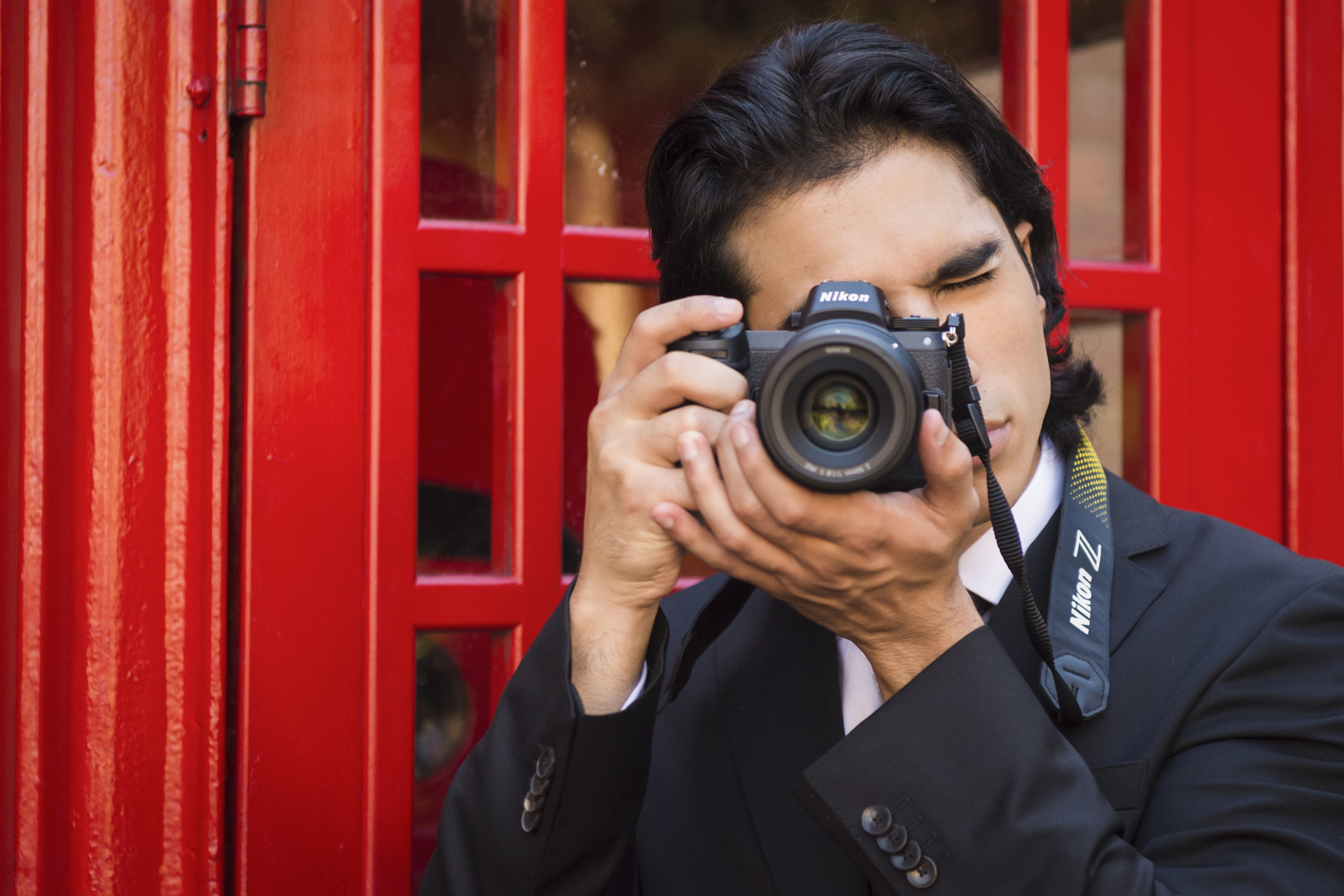
Why you should buy this: Solid photos, fast performance, and an affordable price
Who’s it for: Serious enthusiasts, semi-pros, and professionals
Why we picked the Nikon Z 6:
The 24-megapixel Z 6 doesn’t have the resolution of the Z 7 or D850, but it does have a much more approachable price. Its full-frame sensor still captures excellent images, and the lower resolution even helps it produce cleaner images at high ISOs, making it better in low light. And unlike Nikon’s DSLRs, it has 5-axis image stabilization built into the body.
All of that is paired with a 12-fps burst mode (or 5.5 fps with live view). The autofocus is also surprisingly good for being among Nikon’s first attempts at mirrorless with a phase-detection autofocus system, if not quite as quick in low light as the D850 DSLR. The Z 6 has a big edge over the D850 when it comes to video, however, with some of the most advanced video features on the market.
As a mirrorless camera, the Nikon Z 6 has less room for controls yet still manages to feel very much like a Nikon, with a comfortable grip and familiar control scheme. Plus, the body includes an excellent electronic viewfinder, weather-sealing, and a tilt screen. While there aren’t many Z-mount lenses available yet, F-mount lenses are compatible via an adapter without any detectable differences in performance.
Read our Nikon Z 6 review
Best Nikon DSLR for enthusiasts: Nikon D500
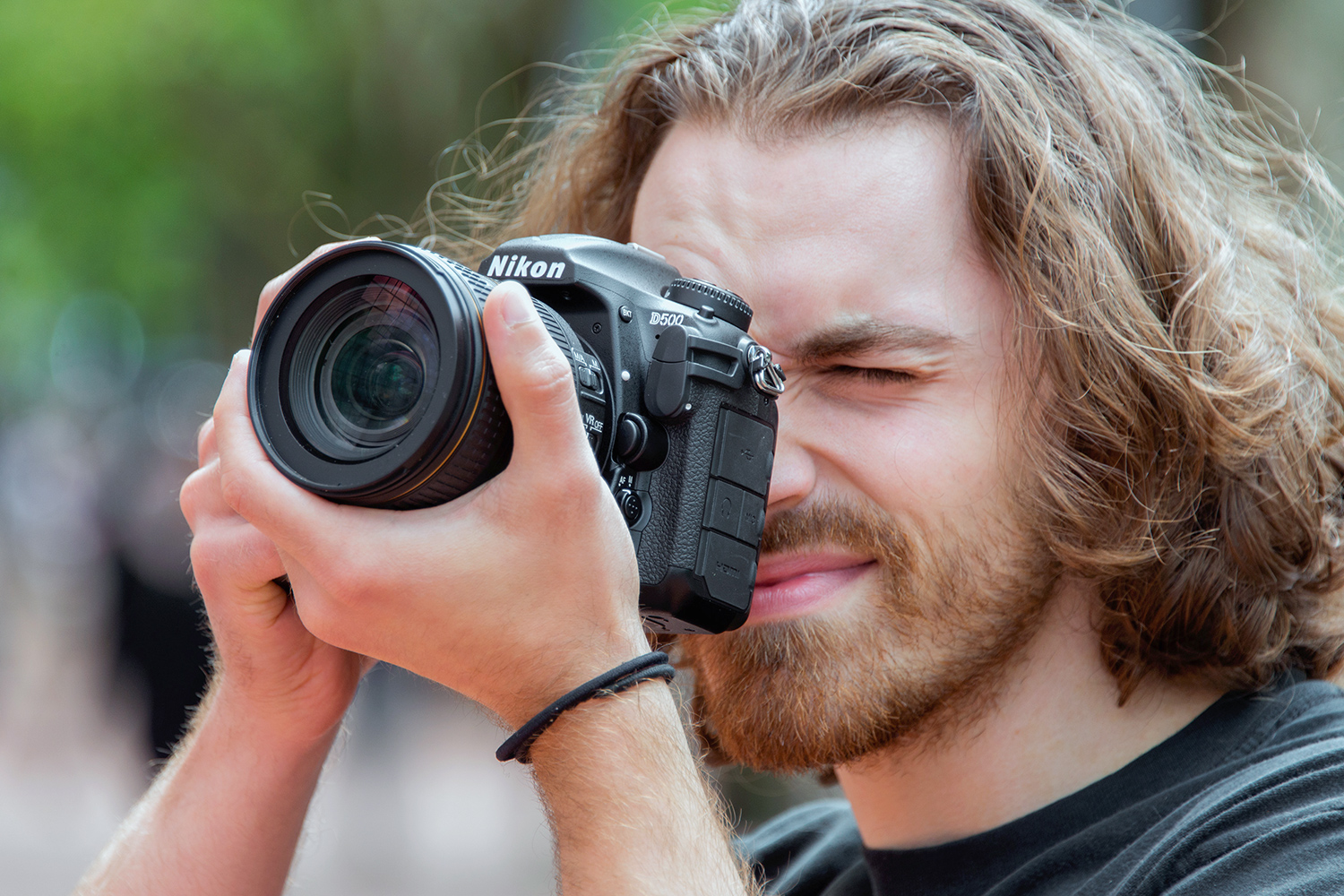
Why you should buy this: Speedy performance and advanced features
Who’s it for: Enthusiasts, action photographers and semi-pros
Why we picked the Nikon D500:
Nikon’s most full-featured APS-C DSLR, the Nikon D500, sports a 10-fps burst mode that’s great for, well, sports. It also uses the same 153-point autofocus system as the D850, but because the frame is smaller, it actually covers more of it — you can track a subject form one edge to the other without losing focus.
While the D500 is an APS-C DSLR, the camera’s image quality even rivaled that of the company’s entry-level full-frame options at launch. The camera is getting a bit older, but still holds its own with good image quality and fast performance.
As a high-end model, the Nikon D500 body offers excellent handling and features. It houses both a tilting LCD screen and a top information display, as well as a control scheme that’s carried over from Nikon’s pricier DSLRs. Available now for around $1,700, the D500 is Nikon’s most expensive crop sensor DSLR, but has enough features to justify that price, particularly for the action photographer.
Read our Nikon D500 review
Best Nikon camera for beginners: Nikon D3500

Why you should buy this: Images way beyond smartphone quality on the cheap
Who’s it for: Beginners and enthusiasts on a budget
Why we picked the Nikon D3500:
While the smartphone has nearly eliminated the budget point-and-shoot, some of the category’s demise has to do with the fact that you can buy a DSLR for only $400. The Nikon D3500 may not be the most capable DSLR, but it’s one of the best cameras that you can buy for under $500 right now. That’s a low price for jumping to an interchangeable lens camera with a relatively large APS-C sensor, which will deliver much better image quality than your phone.
The 24.2-megapixel sensor offers excellent image quality for the budget category, while the performance and 5-fps burst rate isn’t bad, either. The autofocus system has just 11 points, and video is limited to Full HD 1080p, but few cameras offer the same level of image quality at the same price point.
While it’s a DSLR, Nikon keeps the D3500 beginner-friendly. The control scheme is simpler than the more advanced models and an in-camera Guide Mode helps teach new users how to use the camera. You can usually find the D3500 for around $400 with a kit lens.
Read more on the Nikon D3500
Best Nikon Point-And-Shoot: Nikon P1000
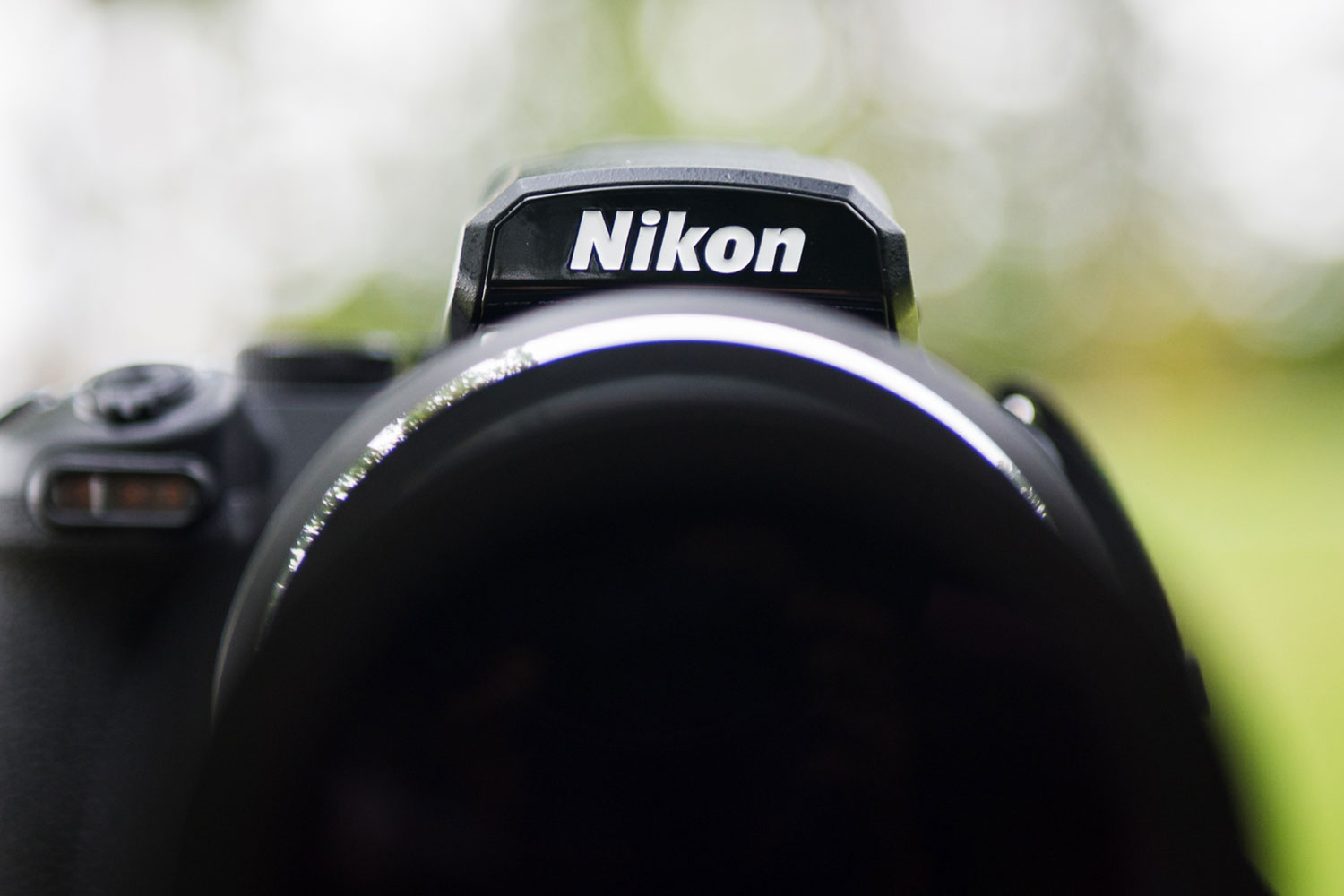
Why you should buy this: Unmatched zoom capabilities
Who’s it for: Bird watchers, wildlife fans — and anyone who wants to snap photos up close
Why we picked the Nikon P1000:
When Nikon launched the P1000, it effectively made other superzooms pale in comparison. With a 125x optical zoom lens, no other sub-$1,000 camera can bring the craters of the moon up close. The zoom is paired with an excellent image stabilization system that actually makes it possible to handhold such a large lens, at least in good light (those moon shots will require a tripod).
While the P1000 has the typical 1/2.3-inch sensor found in most basic compact cameras, it still captures solid photos in good light. That smaller sensor suffers more in low light (especially compared to the cheaper Nikon D3500), but the lens captures details that you wouldn’t otherwise be able to. While most photographers don’t need a 125x zoom, the P1000 is a solid choice for capturing wildlife and other far-off subjects.
With the large lens on the front, the rest of the body feels more like a Nikon DSLR than a point-and-shoot, with a good-sized grip, manual controls, and a viewfinder. Getting up that close, however, isn’t cheap — the Nikon P1000 sells for just under $1,000.
Read our Nikon P1000 review
Editors' Recommendations
- The best free photo-editing software for 2024
- Best Sony A7 III deals: Save $300 on the full frame mirrorless camera
- The 15 best GoPro accessories in 2024
- The best webcams for Teams, Zoom, streaming, low light and more
- The best camera phones in 2023: our top 9 photography picks


